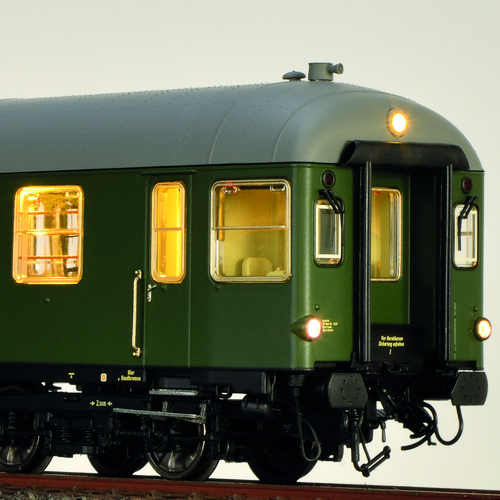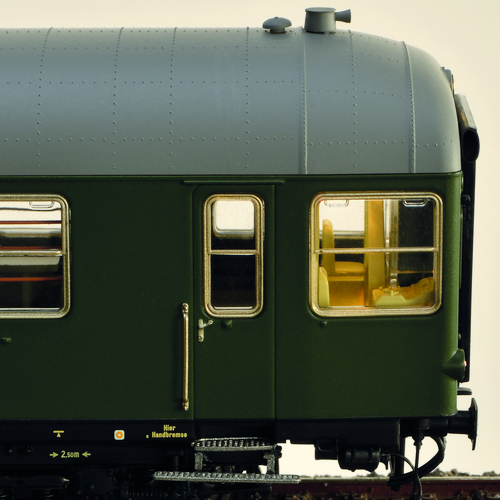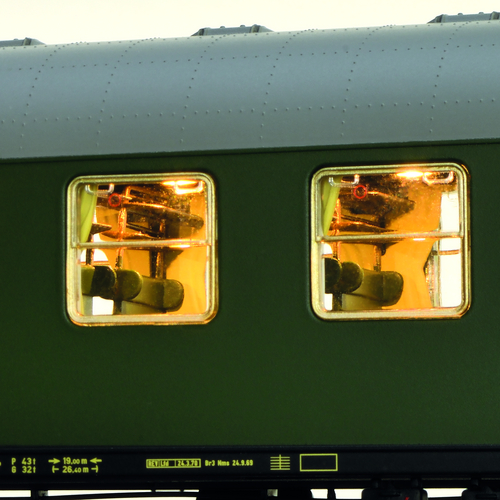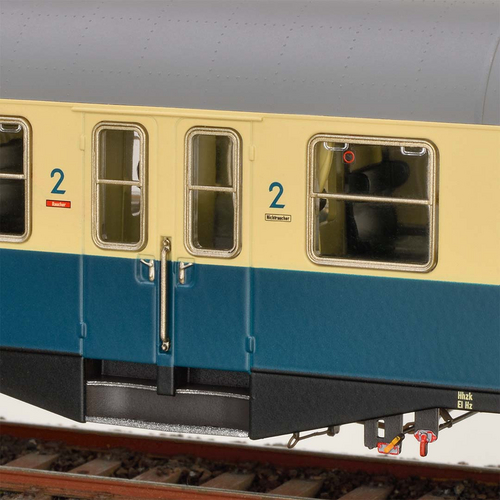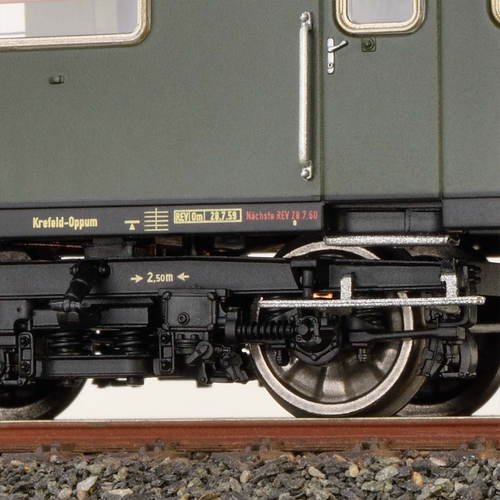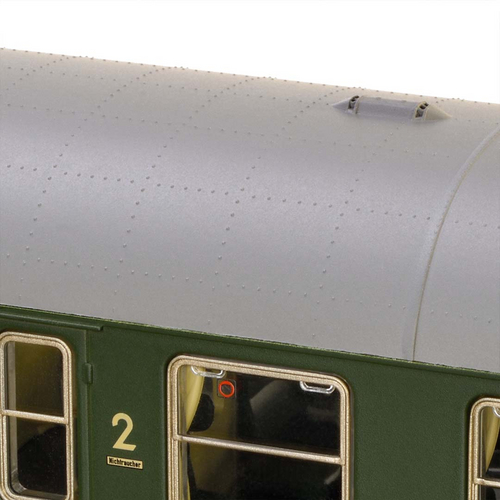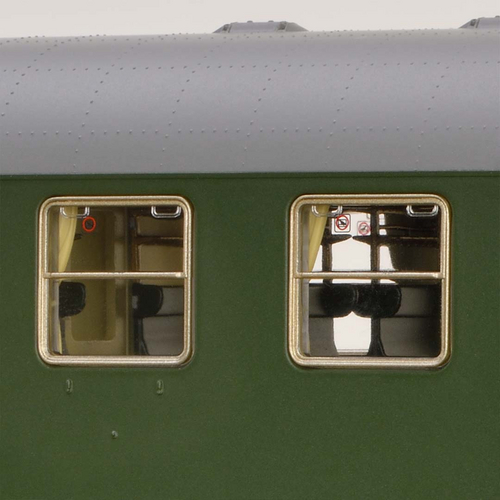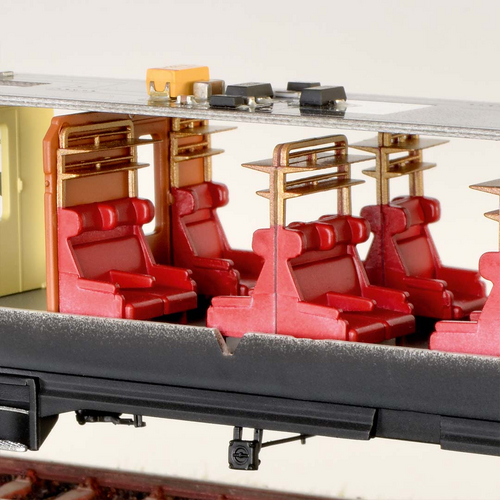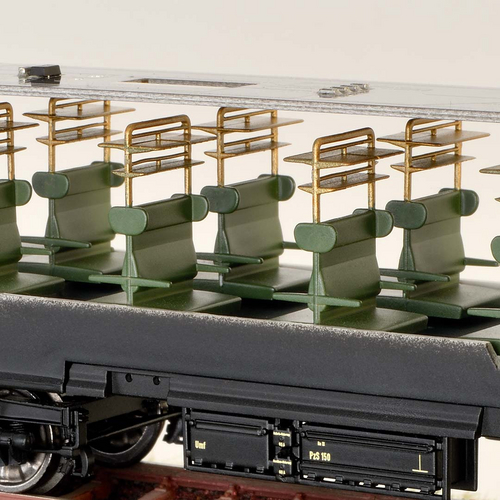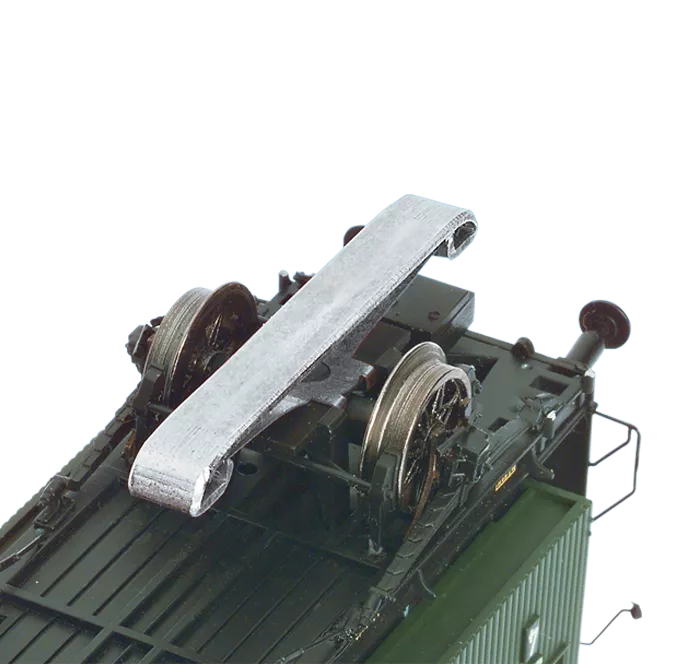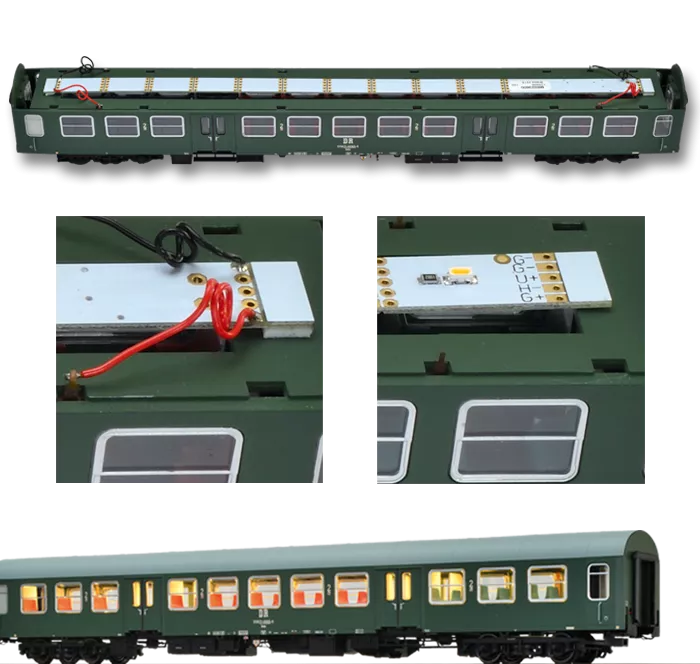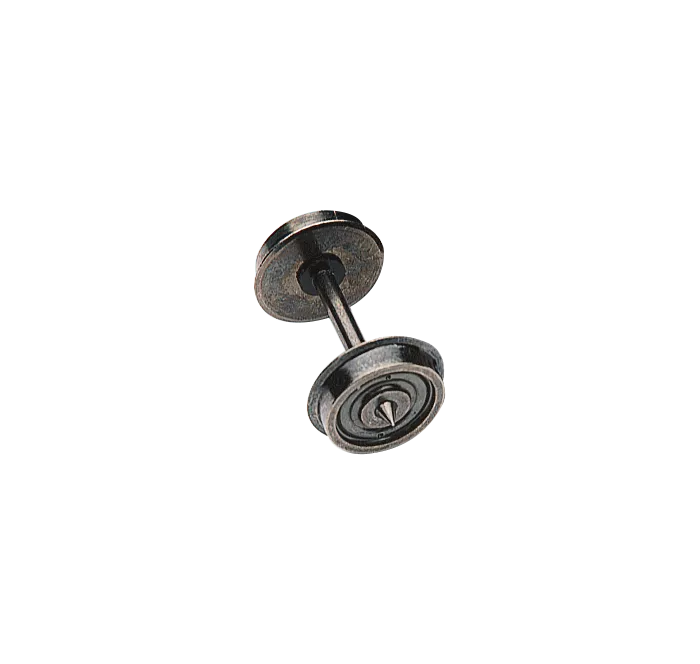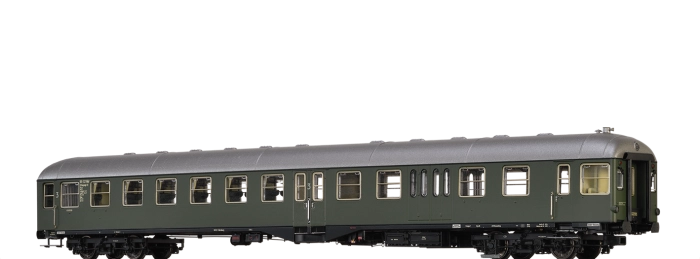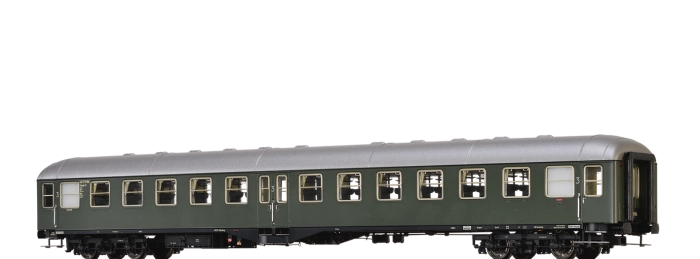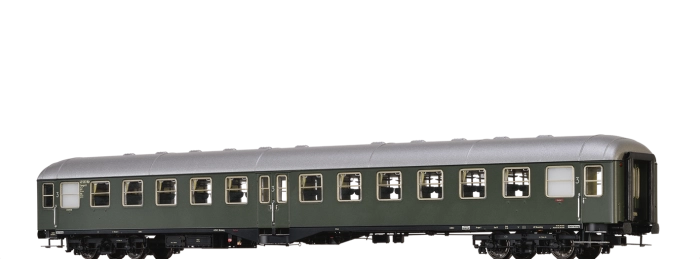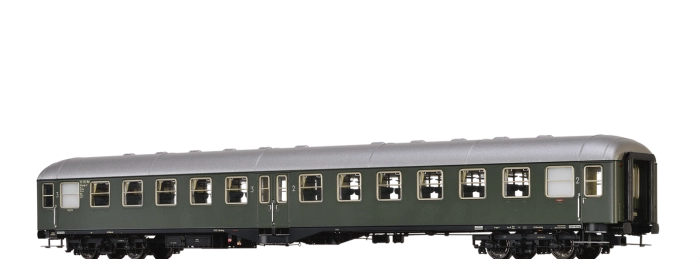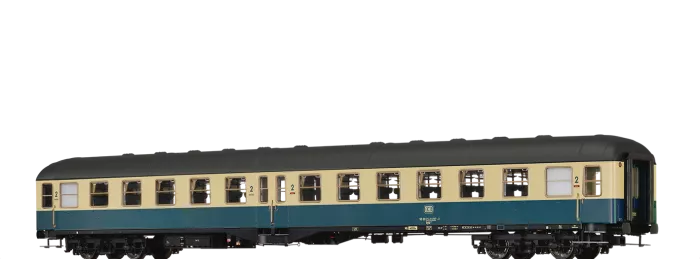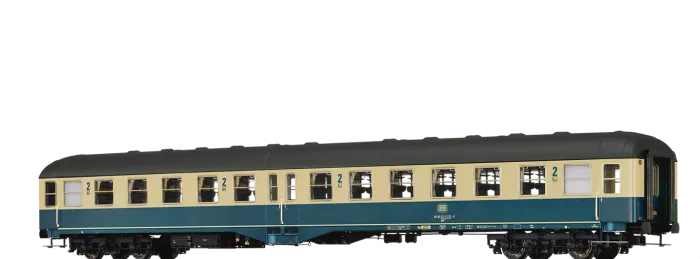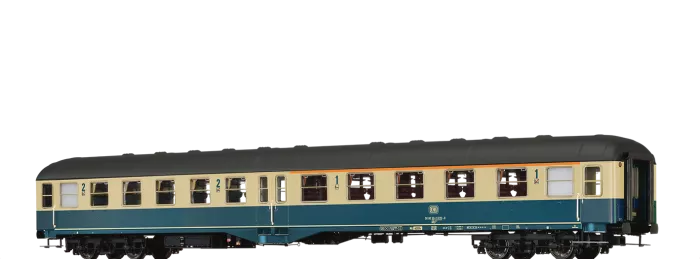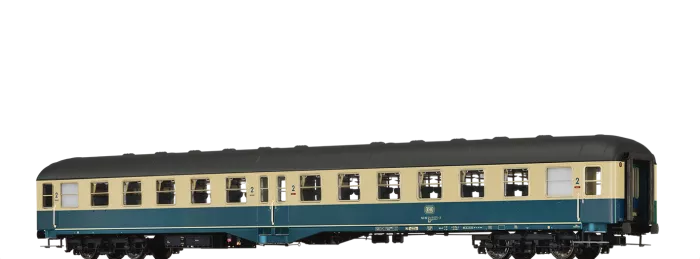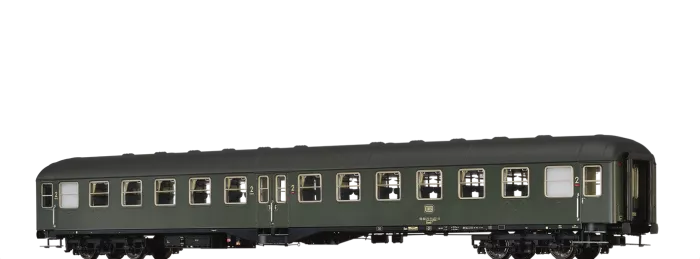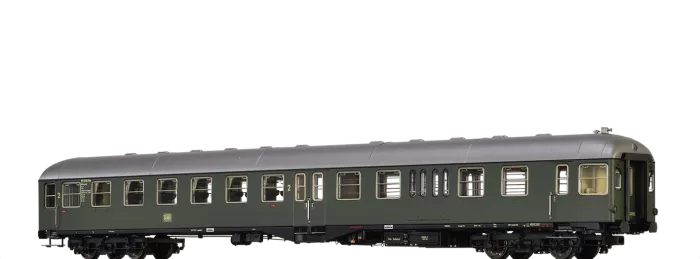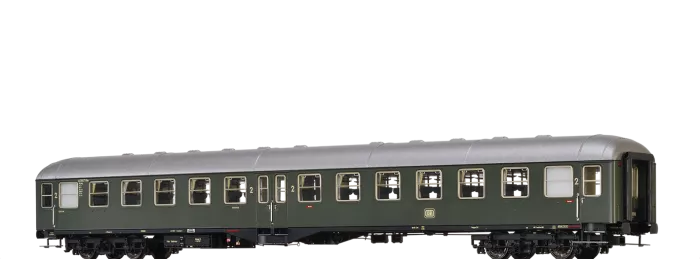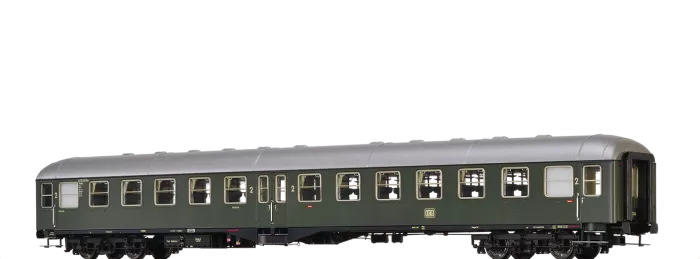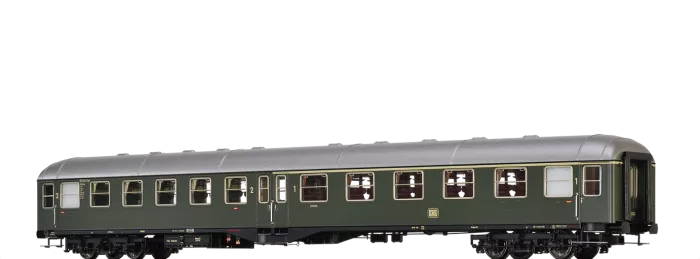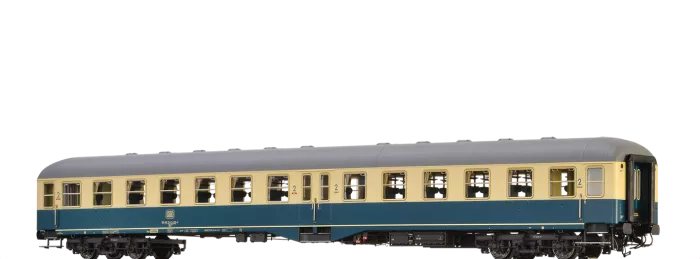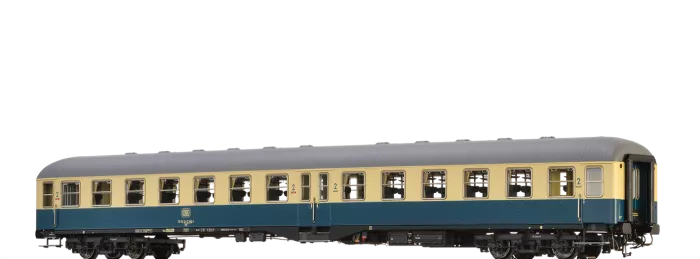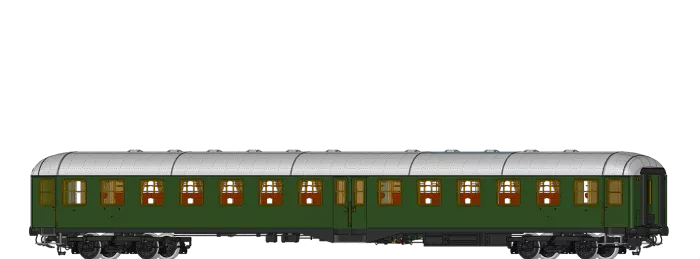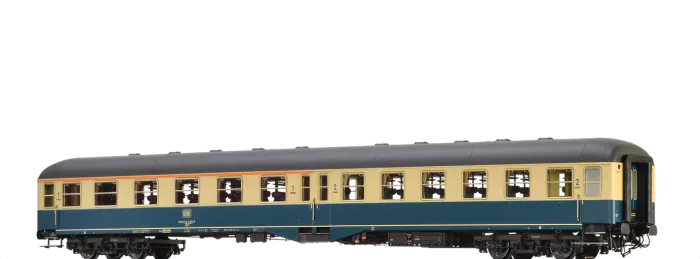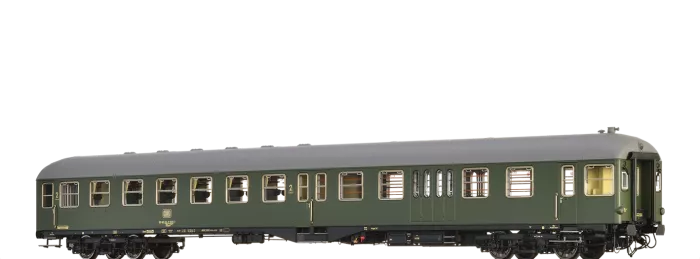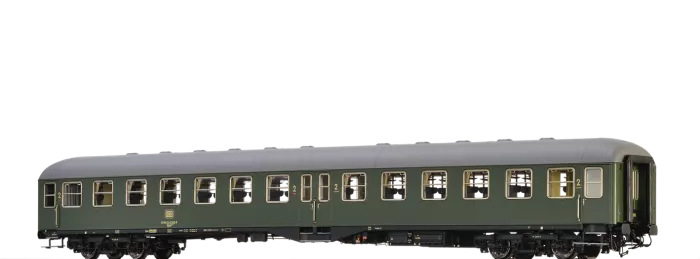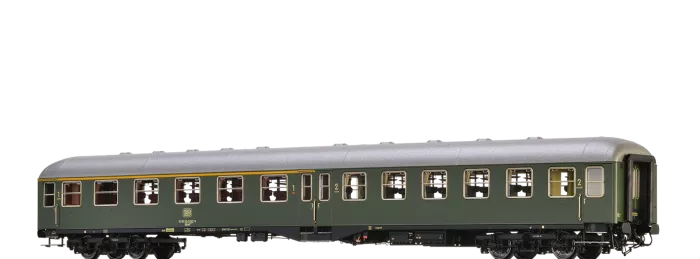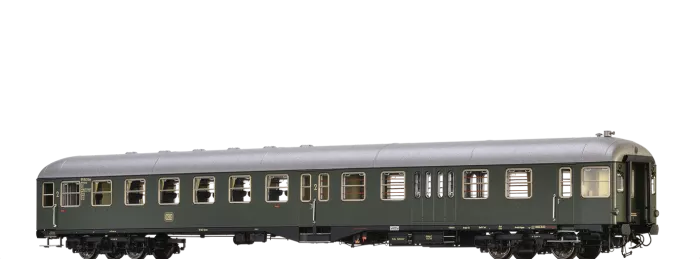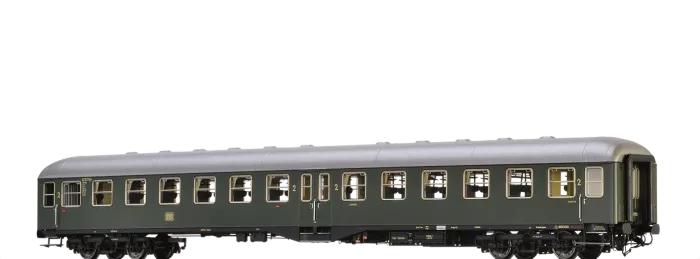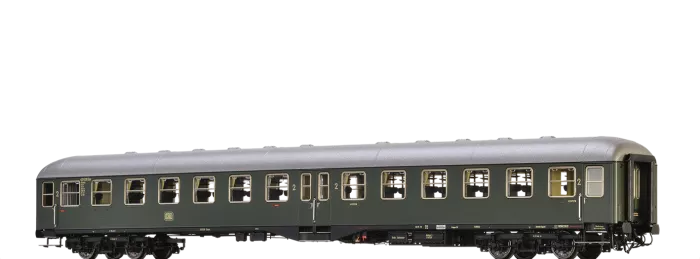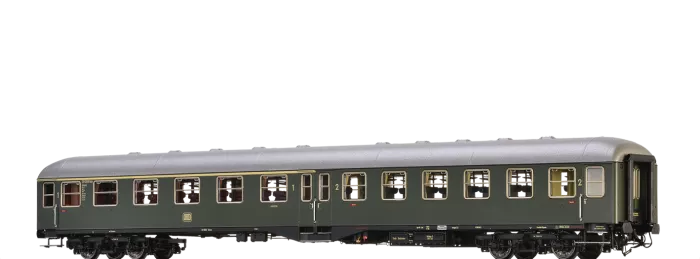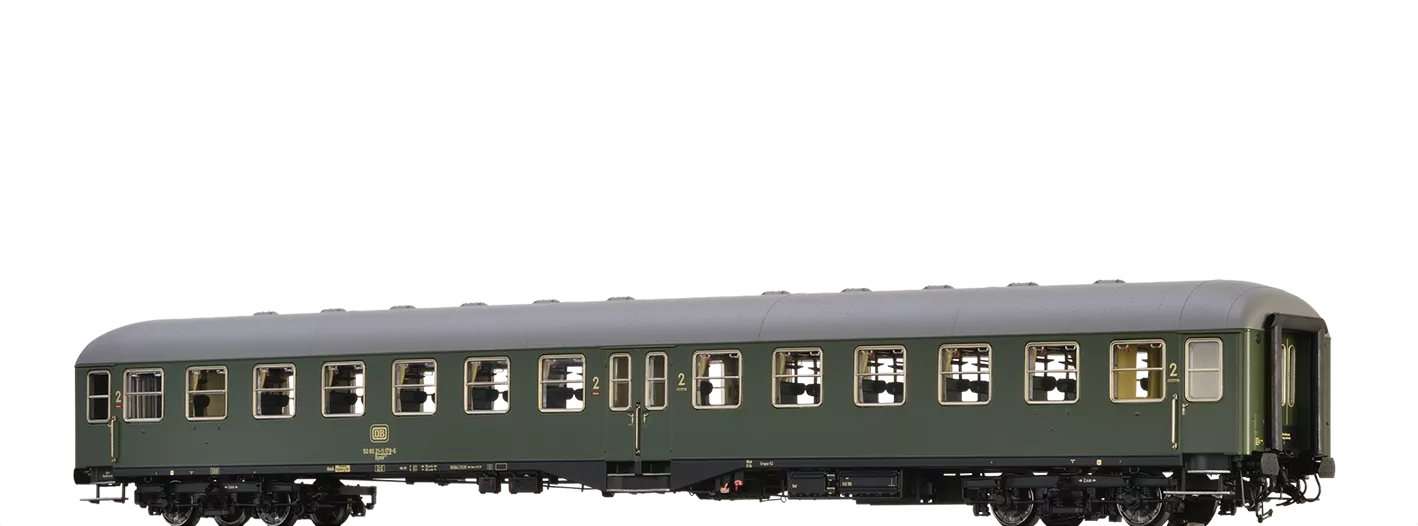
Passenger Coach Bylb421 DB
Road no.: 50 80 21-11 179-6; BD Hamburg / Hamburg Hbf
Model details
- True-to-scale reproduction of the windows
- Wheel sets of type 094/096 with corrugated wheeldiscs on both sides
- True-to epoch interior fittings
- Interior lighting prepared or built-in
- Elastic rubber bulge
- NEM-standard short coupling
- Version with riveted roofs and overlapping roof plates
- Alternator on bogie separately mounted
- Fine paintwork and printing
- Extra mounted steps
- Extra mounted handrails
Downloads
Info about the original
The 26.4 m express train wagons were introduced before the express coaches of the same length. Around 1950, DB, together with a number of wagon factories under the management of the Wegmann company, began development of new four-axle passenger carriages for district and long-haul transport at medium distances. After building three test coaches with a length of 26.4 m with central and end doors, the company finally decided on this type of construction. In late 1951 the first order for 500 of these carriages was placed with 15 coachbuilders. In the following years additional orders were placed for 245 units, the delivery of which would drag on until early 1955. The two basic types were the mixed-class AB carriage and the single-class B carriage. On the basis of the latter type, various push-pull train control cars were developed to meet traction requirements for push-pull operations and, for traffic reasons, carriages with luggage compartments or dining areas were also designed. The running gear (Minden/Deutz-type bogie) and the structural design were basically the same for all types. The undercarriage and body frame were a welded sectional steel construction. Special attention was paid to sound and heat insulation, the cost of which had to be kept within reasonable limits, in keeping with the planned use of the carriages in district traffic. The walls and undercarriage were lined with rock wool, the roof with a sprayed insulation consisting of asbestos flakes. Apart from two designs, the carriages were divided into two passenger compartments of different lengths by the central doors, which were actually located slightly off-centre. The central doors featured two relatively narrow revolving doors and a central pillar, while the end doors with their wide revolving doors, whose centre of rotation was moved inwards, and the somewhat more favourable arrangement of the steps allowed convenient entry and exit. Multi-part folding doors formed the end of the front wall, which, when closed, protruded into the vestibule like a box to keep the “Bern rectangle” free. The seating arrangement in the passenger compartments was 1 + 2 in the upper and 2 + 2 in the lower-class carriage. The toilets were located at the ends of the carriages and protruded into the large vestibules. The interior design of the carriages was relatively simple, but nevertheless dignified. In the first-class areas, the walls and the frames of the upholstered seats were covered with fine wood veneer; in second class, the wall surfaces were coated with plastic wallpaper. The upholstery in the first-class carriage corresponded to the standard design in use by Deutsche Bahn at the time. The second-class carriage was equipped with upholstered double seats covered with imitation leather. The luggage racks in both classes consisted of thin-walled, high-strength tubular steel and were coated with stove enamel in a nickel silver colour. A high-pressure heating system was installed, which could be regulated in fine degrees by opening and closing heat-insulating flaps. The main steam pipe under the carriage, a common feature in other models, was removed. In addition to the steam heating, a normal electric heater rated for 1,000 volts was installed, whose resistance heating elements were arranged under the seats so that the floor remained unobstructed. Given the importance of push-pull operations within the framework of the structural transformation of the traction haulage service, as well as the need to unburden the over-utilised (terminus) railway stations, all express train wagons were designed for this purpose and prepared for subsequent installation of the necessary equipment, such as control lines and the main tank air line (8 atmospheres). 118 carriages received driver’s cabs. Initially, however, only some of these carriages and the associated piped wagons were fitted with all equipment necessary for operation by remote control. Located at one end of the carriage, the driver’s cabs were completely identical in all three push-pull control car types; the operational requirement to be able to use these carriages freely like normal carriages resulted in a head section with foot bridge. The floor plans show the arrangement of the driver’s cab and the conductor’s compartment on both sides of the central passageway in the carriage’s head section. Two hinged doors with window panes were arranged so that one of them formed the end exterior wall when used as a control car. When used in normal trains it served as the end of the driver’s compartment. Analogously, the other door either connected the head section to the interior or served as the end of the driver’s cab. This sensible arrangement of the doors allowed free movement from carriage to carriage if necessary.


